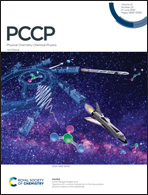Rapid identification of ultrathin amorphous damage on monocrystalline silicon surface†
Abstract
Amorphous silicon (a-Si) is a type of common surface damages during the ultra-precision machining of monocrystalline Si. However, it is difficult to identify the amorphous damage of several nanometers by traditional detection methods, which severely hinders the performance improvement of Si-based products. In this study, ultrathin a-Si was found to act as a mask against etching in HF/HNO3 mixtures, resulting in the formation of protrusive hillocks. Reciprocating sliding on an atomic force microscope (AFM) was employed to simulate a material removal event in surface manufacturing. The effects of normal load, etching time and etchant concentration on selective etching were investigated to optimize the parameters for amorphous damage detection. The mechanisms for selective etching were further addressed based on high-resolution transmission electron microscopy (HRTEM) detection and comparative etching of different surface structures. Further analysis demonstrated that a lower dangling bond density of a-Si could result in the reduction of the dissolution rate, while deformed Si lattices, including stacking faults, dislocations and microcracks, could facilitate rapid selective etching. By the proposed selective etching, ultrathin amorphous damage and its spatial distributions can be rapidly identified with high resolution and low destruction. This study sheds new light on achieving a high-quality Si surface in ultra-precision machining.



 Please wait while we load your content...
Please wait while we load your content...